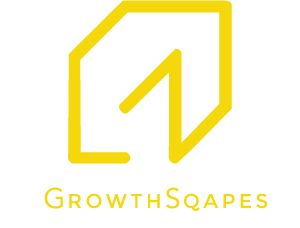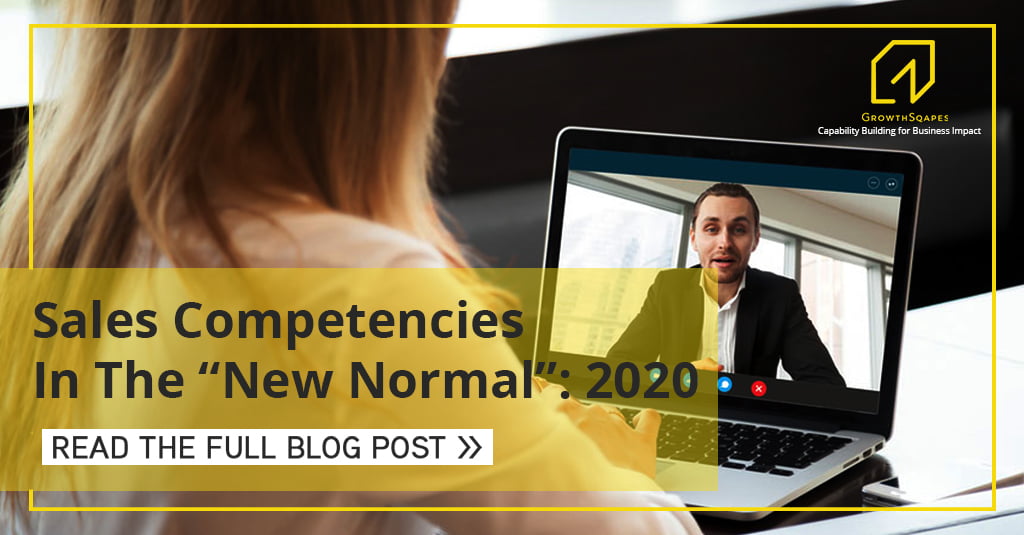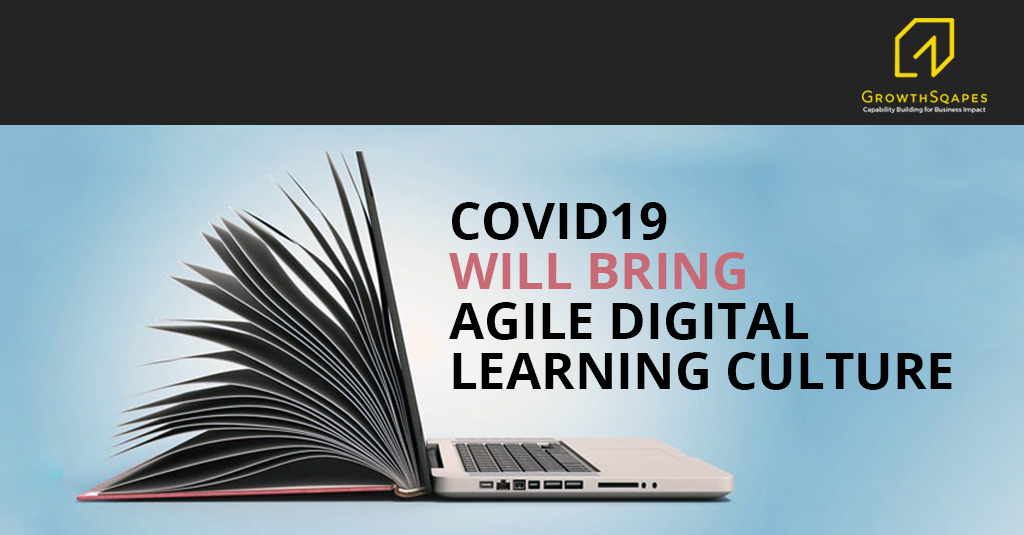Sales has been around since we started bartering as cavemen. Evolving progressively over the centuries and decades, the pace of change in the B2B selling world has gained a lot of momentum in the last decade. With the advent of the new informed buyer, the buying landscape has also changed significantly. What the buyer expects from the salesperson now is a lot different from earlier. Additionally, the emergent circumstances of Covid-19, known as the new normal, are forcing companies to look at restructuring and re-skilling their sales force to build resilience and make them successful in that new normal era.
Let us first look at some of the changes in B2B buyer behavior which is impacting the way B2B sales is evolving:
- Today’s buyers are well-informed. A tsunami of information is available at their fingertips even before they interact with salespersons. The expectations that customers have from salespersons now has evolved as someone who can seek and provide useful information which will help the customer to make their purchase decision.
- They have become more demanding and are looking for customized solutions. They will not mind spending that extra dollar to get what they are looking for. A recent research* shows that 80% of B2B buyers expect companies to interact with them on real time. Unlike earlier, they are involving specialist procurement teams to evaluate vendors and offers, making the decision-making process more complicated with multiple stakeholders with their individual interests and influencing power.
- Clients are increasingly influenced by the information they get on social media. In fact, this works both ways as clients are also able to influence more by providing information concerning products and brands – a function that used to be the sole responsibility of businesses a decade ago.
- Commoditization of industries has made customer experience the differentiating factor. 85% of B2B marketers agree that consistency across content, teams, and channels is the backbone of an effective customer experience and 65% of business buyers will switch without personalized interactions.
- Almost,the entire buying process is happening on virtual/remote mode. In fact, with the current Covid -19 pandemic, in some product categories, it has now become 100% virtual and there is no F2F meeting between the buyer and the salesperson at all. This means that building trust and giving that personal touch is so much more difficult now.
Given the above scenario, let us look at what it takes for the salesperson to be successful in today’s environment; in the below 2 categories:
1. Skills and competencies which were required earlier but are now gaining importance:
- Personal Branding – the ability to build and nurture a personal brand that portrays expertise. This is a differentiating point and critical for adding value, especially in luxury selling. It would include leveraging social networks to strengthen one’s brand.
- Rapport Building – This skill is central to the entire customer experience and more so because of the post-Covid 19 situation where rapport-building has to be done remotely. 73% of customers say companies’ trustworthiness matters more than it did a year ago.
- Influencing – Today’s salesperson communicates and behaves more like a consultant. They speak with gravitas and are more equal in every way to the buyer. The skill of influencing adds that cutting edge that makes a salesperson’s offer irresistible to the customer.
- Value Creation – The professional salesperson understands that value is created through the entire sales cycle starting from the first touchpoint to every single interaction and communication whether through email, phone or face-to-face meeting.
- Persuasive Story-telling – Buyers don’t want to hear about your product or service. Good salespeople know this and weave the product or service they’re selling into the larger story that bends and blends with the customer receiving what they want (which is usually not your product, but a key benefit).
2. Competencies which need to be developed and adapted to match the demands of resilience under the new normal:
- Digital Proficiency – the ability to leverage digital tools and platforms over a variety of digital devices as well as sales force automation and marketing automation to generate results.
- Prospecting and Referral Generation – In the phygital age (i.e. physical + digital), the ability to generate leads as well as referrals through quality social connections and getting warm introductions and, attracting a growing volume of the right relationships. To enable organizations and sales professionals build resilience, Growthsqapes is creating new and exciting offerings in the space of social network selling.
- Providing Insight –the ability to create new demand by proactively bringing new insights to target prospects. Salespeople should be able to do big-picture thinking and evaluate alternate scenarios to bring out value in their proposition.
- Buyer Process Map (BPM) Recognition–salespeople should understand that there are multiple buyer process maps and have the ability to recognize where the buyer is in the buyer journey.
- Sales Process Execution – the ability to sell the way the buyer wants to buy. The sales process execution should be dynamic and in sync with the BPM to increase the conversion ratio.
Successful capability development of a B2B salesperson depends on nurturing and embedding the above skills and behavior elements in the personality of the salesperson. For customized interventions to develop the sales competencies in the new normal feel free to contact Growthsqapes.
*independent research done by author
This blog has been written by Mr Sandip Mitra, Associate Partner at GrowthSqapes.
The coronavirus has offered one collateral benefit. It has given Learning & Development the means to finally achieve the ‘the last mile’ coverage. Naysayers in L&D with fixed mindsets are still hoping that virtual learning will vanish with the virus.
However, courtesy the disruptive changes, virtual organizational learning and development is the ‘new normal’ to which CHROs, L&D leaders, managers and learners must adapt boldly.
COVID, post-COVID, lockdown or not – The inevitability of new skill development by learning, unlearning and relearning faster than before will continue to remain top-of-the-mind problem recall for organizations – private as well as state-owned.
The shifts in technology, life-expectancy in general, nature of work practices and new age gig economy business models have generated a deep need for continuous, lifelong learning and development. It is ‘Learn or Perish’.
In most professional business organizations, Learning has got elevated from the outer circle to the inner core of talent management. Come COVID-19, leading organizations are taking initiatives for “home delivery” of learning to their people in a more customized way, integrating work and learning more seamlessly than ever before.
CHROs are on a thoughtful yet hot pursuit for added learning-transfer technologies and digital learning solutions to augment the process of last mile home-delivery of executive learning.
According to a survey, almost 94% of CHRO and L&D leaders consider it a top-priority to ensure that the coronavirus does not make learning episodic. They want to keep learning as a perpetual capability building, skill-building endeavor that ensures a fast-footed workforce with new skill and competence to adapt boldly to the changing business scenario.
Like every crisis, the corona pandemic is also throwing up opportunities. Organizations must exploit the momentum generated by Covid-19 to proactively build a learning culture that is new and updated digitally. Time is ripe to raise the building blocks of an Enterprise Digital Learning Culture.
Digital Technology alone will not build the Enterprise Digital Learning Culture. In most organizations, only 20% of employees exhibit truly effective learning behaviors. As behaviors construct an organization’s culture, it is absolutely necessary that organizations drive base-level interventions to induce positive effective learning behaviors in their employees.
It is simple, can capability-building happen without the learner’s initiative and willingness? Thus, besides the technology platform it is the employee’s new behaviors as learners that would build a truly enterprise digital learning culture. Here in, lies the bits and bytes of Digital Learning Transformation.
One of the many comforts of technology is its ability to provide independent learning experience across all age groups. That takes care of your Millennials as also your Baby Boomers.
Efficacy of experiential learning in virtual mode
The efficacy of experiential learning towards behavioral modifications and holistic development is well accepted. However, here’s the big question – Can experiential learning happen virtually? CHRO, L&D leaders, Facilitators and Participants need to remind themselves that virtual is only a medium.
Behavioral learning is based on principles of having an experience, reflecting on the experience, learning from the experience and conducting self-trials from what has been learnt. If the facilitator can create an atmosphere in Zoom or any other virtual classroom, where participants can have an experience, reflect on it, learn and experiment – one can remain confident that experiential learning can be made effective even through virtual means.
Of course, the facilitator needs to be competent in understanding the norms and nuances of the virtual medium and must be adept in the skills to induce and intervene effectively in the virtual lab.
Moreover, in its true sense, experiential learning has its noiseless presence even in certain conventional skill development programs – task-related skills, decision-making skills, project management skills etc. Skepticism in the efficacy of experiential learning in virtual mode, also jeopardizes the progress of these conventional programs through the virtual learning methods. What must be kept in mind is that Virtual is just a medium.
Elements of Enterprise Digital Learning Culture
- Convert In-person offerings to Virtual offerings – Organizations need to change the way learning and development is approached. It is now a mandate to abandon conventional training and development approaches and migrate to an agile learning mindset of perpetual learning that is digitally-enabled, self-paced and gives personalized experience. At all levels, an assortment of digitized offerings from micro-learning to Massive Open Online Courses (MOOCs) needs to be made available through which the organizations can easily serve the learning needs and capability-development initiatives of its employees.
- Adaptive Learning Delivery – Any curriculum, anywhere, personalized and delivered by any means other than in-person – is the new normal. If your organization has a practice of delivering customized learning programs to address the unique learning needs of an employee through just-in-time feedback, next-steps, and resources rather than just rolling out a one-size-fits-all learning experience – you are in an Adaptive Learning zone. However, the next level in the maturity curve of adaptive learning is a stage when the algorithm of your learning-technology platform decides on what learnings to offer, timing of the offer and how much of the curricula to offer based on the individual’s learning behaviour, memorized as patterns by the user experience (UX) and user interface (UI) of the platform.
- Learning Mobility Programs & Tools – The culture of enterprise digital learning is reinforced when the organization initiates to offer the content and meet the learning objectives through Gamification. Learning is fun when the learner can score, compete with others, have a sense of winning and achievement and gets excited to avoid a loss. However, the bits and bytes of digital learning transformation lies in influencing the employees to use the tools. L&D managers’ task is to highlight to the employee, how the skillsets that the employee requires to perform a particular task are fast changing; and use the ease and attractiveness of the gamifications to make the employee come to the okay graph of using the gamified tool and learn. Gamification is also a great leveller. To a considerable extent it equates learning across all organizational grades and levels and builds a common learning vocabulary of growth. That gets exchanged in the organization’s chatbot or learnbot. Bosses use gamification as an opportunity to put across the point that, learning is fun and business, but not trivia – an important perception determinant towards building a digital learning culture enterprise-wide. Besides, the collateral gain of effortless employee engagement.
- Digital-First learning Strategy – With changing business dynamics, the half-life periods of most skills and competence are diminishing fast. Obsolescence, substitutions, double-hats to reduce headcount, role reversals, role redundancy created by robots and computers are realities. Organizations must focus on high-speed reskilling and upskilling if they want to avoid these management menaces. Therefore, the Board, CEOs and CXO level leaders must on-priority first focus on the ‘Learning and Development Strategy’ within the HR Strategy, stressing more than emphasis on digital learning ecosystem. The leadership must align L&D Strategy to HR Strategy in such a way that L&D becomes the essential process that compliments the core business process. One of the many way to endorse and elevate the importance of learning in the organization is by linking learning to the reward and recognition plan. Incentives to learn drive learning. Skills-based pay policies working well are glowing examples, particularly in the manufacturing sector. A standard blended learning formula is 70:20:10. Within this, 70% of learning is acquired using on-the-job experiences, 20% over informal learning by interacting with others, and the 10% by formal learning methods. Each organizations must formulate its own blended learning ratio based on its specific business essentials.
- Effective Learning Governance
Organizations willing to adopt an enterprise digital learning culture must put in place an effective learning governance model. Learning governance significantly improves decision-making and helps to align your learning strategy with your larger business strategy. It helps ensure that learning is not adhoc and episodic but strategically planned at all levels and flawlessly executed at every part of the organization. Efficacy and efficiency of learning programs and organizational development interventions are direct outcomes of prudent planning and monitored execution. Robust learning governance creates efficiency within the learning ecosystem, ensuring an effective decision-support system for the entire stakeholder-base of the learning community. Keeps learning tuned to changing times like Covid-19 and its shifting business trends.
Conclusion
Coronavirus has physically separated us but systemically united us. Digital and biological worlds have fused people and technology despite social distancing. This is to stay at least till the foreseeable future. It is beyond doubt that this would impact the way people work and business organizations generate value. Across all industries, national economies and human societies – the future of work is going to get redefined in terms of knowledge, skills and competencies.
Fast economic recovery is what nations would expect; bold adaptability is what business organizations would want to respond with. That boils down to how people perform at work in the post-Covid world. Continuous capability-building, reskilling and upskilling at all levels are definitely not optional. These mandates have to out-speed the speed of spread of the coronavirus. Learning & Development has to grow into an enterprise-wide culture.
This blog has been written by Satyakki Bhattacharjee, Managing Partner at GrowthSqapes.


